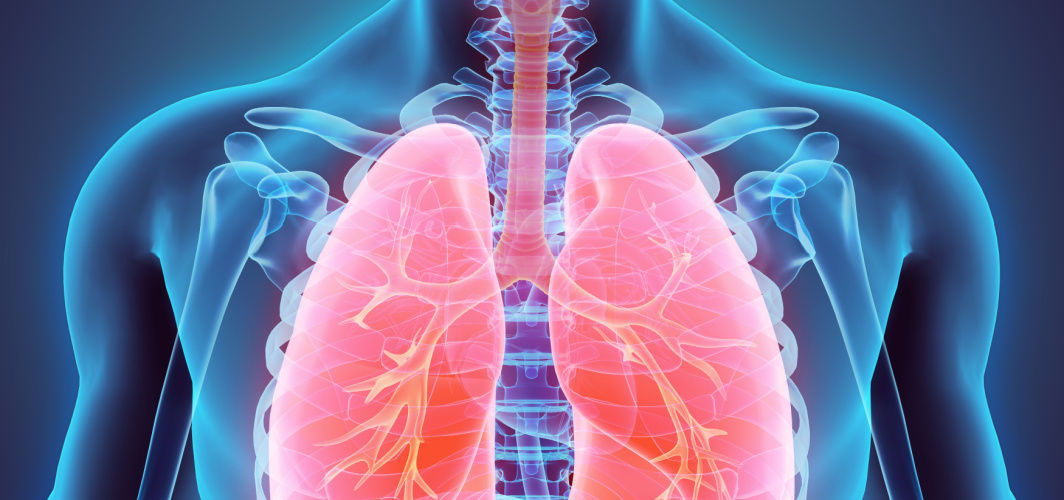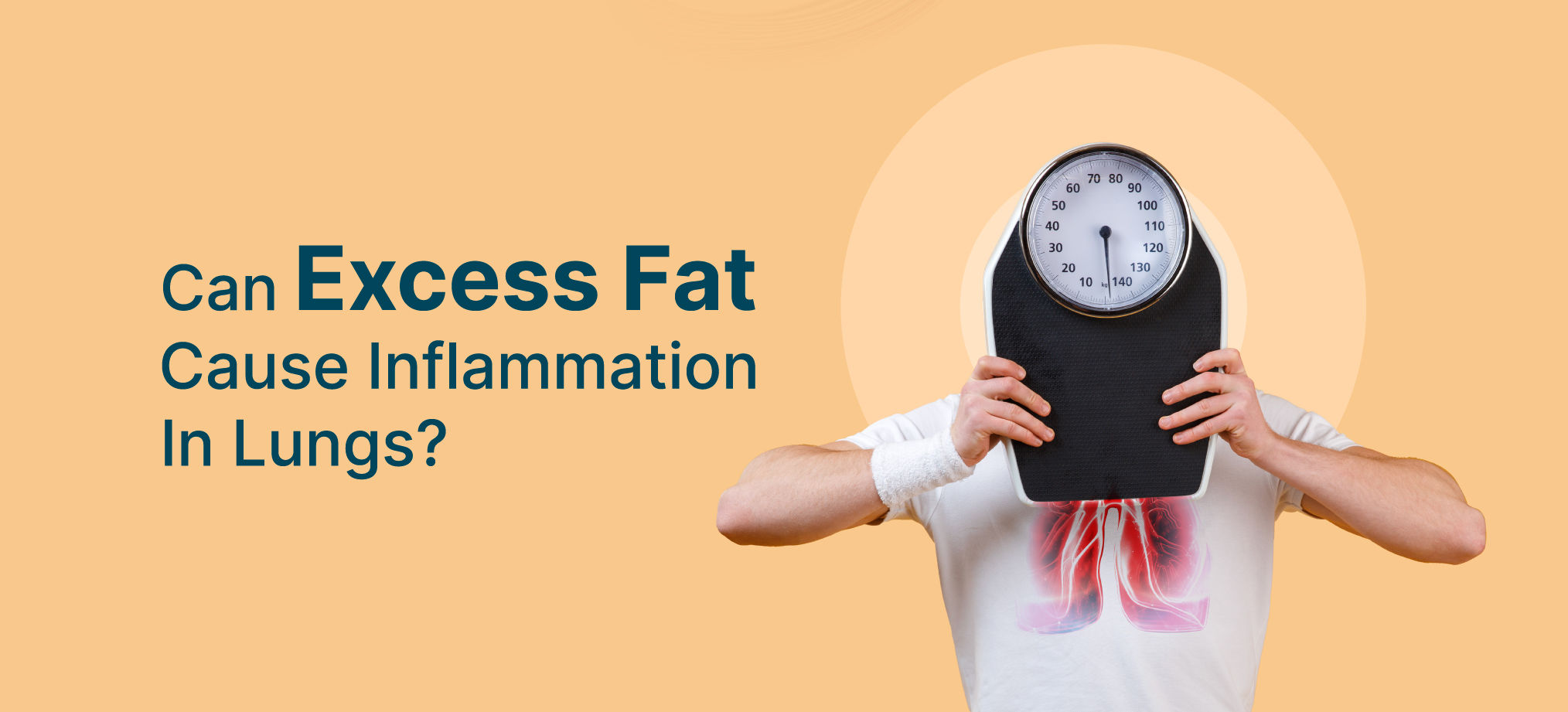Respiratory Health
Rare Lung Diseases: Types, Causes & Treatment
7 min read
By Apollo 24|7, Published on - 12 October 2023, Updated on - 02 November 2023
Share this article
0
0 like

Rare lung diseases refer to a group of respiratory conditions that are infrequently encountered in the general population. These diseases often have distinct characteristics and may require specialized diagnostic tests and treatments. Understanding the types, causes, and treatment options for rare lung diseases is crucial for several reasons. Firstly, early diagnosis can lead to better outcomes and improve the quality of life for individuals with these conditions. Secondly, awareness of these diseases helps healthcare professionals provide appropriate care and support. Lastly, research and advancement in lung diseases treatment can benefit not only those affected but also contribute to the broader field of respiratory medicine.
In the following sections, we will delve into different types, causes, and various treatment options available to manage lung diseases effectively.
Types of Rare Lung Diseases
Lung diseases types encompass a spectrum of respiratory disorders, and among them, rare lung diseases are characterized by their infrequent occurrence and often complex nature.
1. Idiopathic Pulmonary Fibrosis
Idiopathic Pulmonary Fibrosis (IPF) is a rare lung disease characterized by the scarring and thickening of lung tissues, making it difficult to breathe. IPF is believed to occur due to ageing, genetic predisposition, exposure to environmental pollutants, tobacco smoke, and certain occupations involving dust or chemicals. Symptoms of IPF include:
- Persistent dry cough
- Shortness of breath
- Fatigue
- Weight loss
- Clubbing of fingers or toes
To diagnose IPF, tests such as chest X-rays, pulmonary function tests (PFTs), CT scans, and a lung biopsy may be performed. Currently, there is no cure for IPF. Medications like pirfenidone and nintedanib can help reduce inflammation and manage symptoms.
2. Lymphangioleiomyomatosis (LAM)
Lymphangioleiomyomatosis (LAM) is a rare lung disease that primarily affects women of childbearing age. It is characterized by the abnormal growth of smooth muscle cells in the lungs, leading to the formation of cysts and the progressive loss of lung function. The exact cause of LAM is still unknown. However, research suggests that it may be related to mutations in the tuberous sclerosis complex (TSC) genes. Common symptoms include:
- Shortness of breath
- Coughing
- Chest pain
- Fatigue
To diagnose LAM, doctors may perform tests, including pulmonary function tests, high-resolution computed tomography (HRCT) scans of the chest, blood tests and lung biopsy. While there is no cure for LAM, treatment options include pulmonary rehabilitation, bronchodilators, oxygen therapy, and hormone therapy which can help manage symptoms and slow the progression of the disease.
3. Pulmonary Hypertension
Pulmonary hypertension (PH) is a rare lung disease characterized by high blood pressure in the arteries of the lungs. PH can be caused due to underlying heart or lung diseases, genetic factors, or exposure to certain toxins. Risk factors include a family history of PH and medical conditions like HIV infection. Common symptoms include:
- Shortness of breath
- Fatigue
- Chest pain or pressure
- Dizziness or fainting
- Swollen ankles or legs
- Bluish lips or skin
Diagnosing pulmonary hypertension involves tests like echocardiography and chest X-rays, lung function tests, and cardiac catheterization. Treatment aims to manage symptoms and slow down disease progression. Lifestyle changes, medications (vasodilators, diuretics, anticoagulants), and, in severe cases, lung transplantation may be necessary.
Less Common Lung Diseases in India
The less common rare lung diseases in India are:
1. Sarcoidosis
Sarcoidosis is a rare lung disease that causes inflammation and the formation of small clumps of cells in different organs, including the lungs. In India, the prevalence of sarcoidosis is relatively low compared to other countries. Symptoms include:
- Persistent cough
- Shortness of breath
- Fatigue
- Chest pain
2. Bronchiectasis
Bronchiectasis is a lung disease characterized by permanent damage and widening of the airways. This leads to a buildup of mucus and recurrent respiratory infections. In India, bronchiectasis is more commonly seen in people with underlying conditions like tuberculosis or cystic fibrosis. Symptoms can include:
- Chronic cough
- Breathlessness
- Chest pain
- Recurrent respiratory infections
Treatment for bronchiectasis involves clearing mucus from the airways through techniques like chest physiotherapy and antibiotics to manage infections.
3. Alpha-1 Antitrypsin Deficiency
Alpha-1 Antitrypsin Deficiency (AATD) is genetic and affects the lungs and liver due to low alpha-1 antitrypsin, vital for lung protection. In India, AATD is relatively rare but can lead to various lung diseases types such as chronic obstructive pulmonary disease (COPD) and emphysema. Symptoms can include:
- Shortness of breath
- Wheezing
- Chronic cough
- Frequent respiratory infections
Treatment for AATD involves managing symptoms and may include medications, pulmonary rehabilitation, and in severe cases, lung transplantation.
Uncommon Causes of Rare Lung Diseases in India
Some of the uncommon lung diseases causes in India include-
1. Tuberculosis (TB)
Tuberculosis is a contagious bacterial infection spread through the air when an infected person coughs or sneezes. Symptoms include:
- Persistent cough
- Weight loss
- Night sweats
Early diagnosis and treatment with antibiotics are essential for managing Tuberculosis effectively.
2. Occupational Lung Diseases
Occupational lung diseases stem from workplace exposure to dust, chemicals, and fumes (e.g., silicosis from silica dust, asbestosis from asbestos). Prevention includes protective gear and reduced exposure.
3. Environmental Factors
High air pollution, with particulates and toxic gasses, raises COPD and asthma risk. Reduce outdoor exposure, use air purifiers, and practice respiratory hygiene for protection.
Diagnosis and Treatment Options for Rare Lung Diseases in India
Lung diseases treatment in India involves a comprehensive approach to the diagnosis and management of rare respiratory conditions.
1. Medical History and Physical Examination
During a medical history review, your doctor will inquire about symptoms, medical history, and risk factors. They'll perform a physical exam to assess lung function and find potential causes of lung issues.
2. Imaging Tests
Imaging tests like X-rays and CT scans can provide detailed images of your lungs, helping doctors identify any abnormalities or signs of lung diseases.
3. Pulmonary Function Tests
Pulmonary function tests (PFT) measure how well your lungs are functioning. PFTs can help diagnose conditions like chronic obstructive pulmonary disease (COPD), asthma, or cystic fibrosis.
4. Biopsies and Laboratory Tests
A biopsy involves obtaining a small tissue sample from the lung for further analysis to confirm diagnosis. Laboratory tests on blood samples can provide information about your lung health.
Medications and Therapies
Lung diseases treatment in India encompasses a range of medications and therapies designed to address various respiratory conditions and improve the quality of life for affected individuals.
1. Corticosteroids
Corticosteroids are anti-inflammatory medications that can help reduce inflammation in the lungs. They are prescribed for conditions like asthma, sarcoidosis, or hypersensitivity pneumonitis.
2. Immunosuppressive Drugs
Immunosuppressive drugs are used to suppress the immune system and reduce inflammation in autoimmune lung disease types like sarcoidosis.
3. Oxygen Therapy
In cases where oxygen levels are low, supplemental oxygen therapy may be prescribed to improve oxygenation and relieve symptoms.
4. Lung Transplantation
In severe cases, where other treatments have not been effective, lung transplantation may be considered as a treatment option. This procedure involves replacing the diseased lung with a healthy lung from a donor.
Lifestyle Changes and Management Strategies for Rare Lung Diseases
Incorporating certain lifestyle changes can enhance overall well-being and improve the quality of life for individuals with rare lung diseases.
1. Smoking Cessation
Quitting smoking can reduce the risk of developing respiratory infections and improve lung function, making it easier to manage your condition.
2. Regular Exercise
Exercise helps improve lung capacity, strengthens respiratory muscles, and helps in weight management. It is important to choose low-impact exercises and consult with your doctor before starting an exercise routine.
3. Breathing Techniques
Practicing specific breathing techniques, such as pursed-lip breathing and diaphragmatic breathing, can help manage symptoms.
4. Nutrition and Diet Recommendations
Adopting a healthy diet can support lung health and overall well-being. Include whole grains, omega-3 fatty acids, and foods rich in antioxidants. Avoid processed foods, saturated fats, and excessive salt intake.
5. Emotional Support and Counseling
Living with a rare lung disease can be emotionally taxing. Seek support from loved ones, support groups, and counseling to manage anxiety and stress. Lifestyle changes and management strategies enhance quality of life and disease management.
Conclusion
In conclusion, early diagnosis, prompt treatment, and ongoing management are key in tackling rare lung diseases. It allows for timely interventions and prevents the progression of the disease. With advancements in medical science, there is hope for patients with these conditions. If you suspect any respiratory issues or have concerns about your lung health, consult a healthcare professional for an accurate diagnosis and appropriate treatment.
Respiratory Health
Consult Top Pulmonology Respiratory Medicine Specialists
View AllFrequently Asked Questions
What are rare lung diseases?
What are rare lung diseases?
What are the common symptoms of rare lung diseases?
What are the common symptoms of rare lung diseases?
What are the causes of rare lung diseases?
What are the causes of rare lung diseases?
How are rare lung diseases diagnosed?
How are rare lung diseases diagnosed?
What treatment options are available for rare lung diseases?
What treatment options are available for rare lung diseases?
Leave Comment
Recommended for you

Respiratory Health
Obesity and Lung Function: Know How Your Weight Can Affect Your Respiratory Health
If you are obese, your risk of developing respiratory problems is higher. Here is what you need to know about the link between obesity and lung function.

Respiratory Health
What Could Be The Underlying Reasons For My Morning Cough?
Several conditions can cause morning cough. Recognizing the exact reason can help identify the onset of an underlying condition that requires intervention.

Respiratory Health
Can Seasonal Air Pollution Affect Respiratory Health?
Polluted air becomes a major public health emergency with the arrival of the winter season every year.
Subscribe
Sign up for our free Health Library Daily Newsletter
Get doctor-approved health tips, news, and more.
Visual Stories

Can Asthma Symptoms Get Worse Indoors?
Tap to continue exploring
Recommended for you

Respiratory Health
Obesity and Lung Function: Know How Your Weight Can Affect Your Respiratory Health
If you are obese, your risk of developing respiratory problems is higher. Here is what you need to know about the link between obesity and lung function.

Respiratory Health
What Could Be The Underlying Reasons For My Morning Cough?
Several conditions can cause morning cough. Recognizing the exact reason can help identify the onset of an underlying condition that requires intervention.

Respiratory Health
Can Seasonal Air Pollution Affect Respiratory Health?
Polluted air becomes a major public health emergency with the arrival of the winter season every year.


